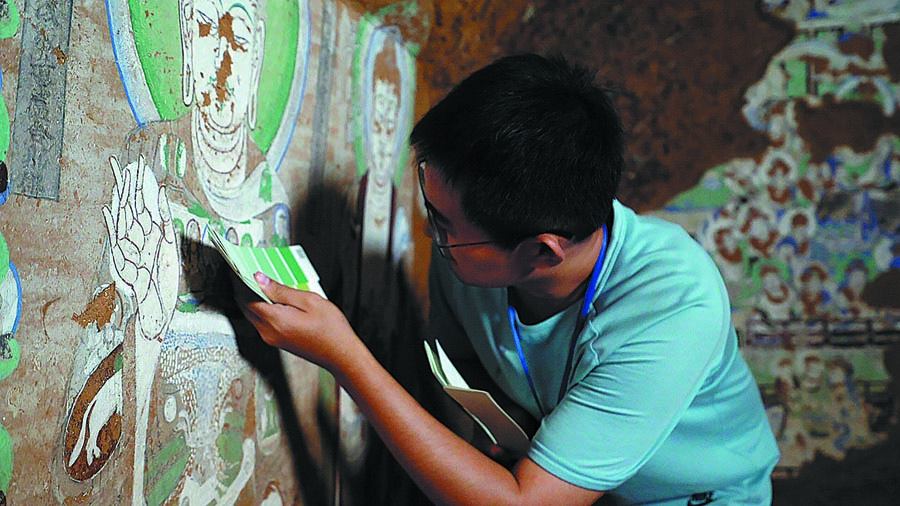

Zhang Jian, director of the Gongbi Academy of the Chinese National Academy of Arts, points out that mural-copying itself is a kind of art. It demonstrates not only the true emotion of the copier but also the person's concept of art.
For Cai Yangcan who took part in the project with Han, copying murals is like a "dialogue" with ancient people and cultures. She can find out the ancient painters' emotions through lines they drew.
"If you look closely, you can find the original painter was hesitant on one line and firm on the other. You can even tell which painter is better," says the 30-year-old.
Murals in a cave were often drawn by a group of painters. The murals are not "old and outdated" as some young people think, Cai says, adding that some clothes and jewelry on the Buddha in murals are fashionable and delicately designed. She calls her five-year copying experience "spiritual practice".
"It's very hard to calm down and immerse oneself in a single thing for a long time in cities," says Cai.
However, she enjoys copying a mural over months. The work is not always easy.
"I feel there's not enough time for me to paint," she says.
After staying in caves painting for a whole day, she continues painting in hotels at night. While staying in caves, she drinks less water because there are no toilets around the caves. Besides, a 25-kg clay board is heavy for her to carry.
The biggest mural copy Cai worked on in 2019 was a piece about 24 square meters, depicting the mural in Cave 220 in Dunhuang Grottoes in Gansu.
More than 12 people from Cai's team painted the one together for six months. Their work stopped in 2020 due to the COVID-19 pandemic.